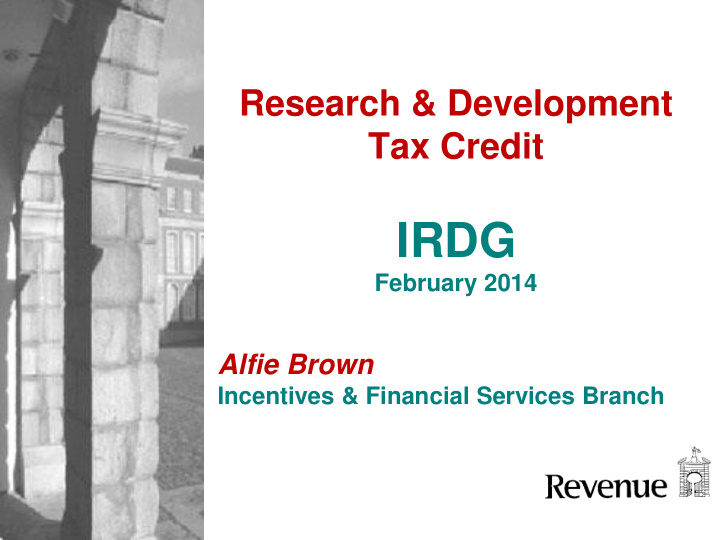



Research & Development Tax Credit IRDG February 2014 Alfie Brown Incentives & Financial Services Branch
Topics • Recap on purpose and history • Claiming the relief (the “dos” and “don'ts”) • Changes in 2013 Finance (No.2) Bill
The Relief • S.766 Tax Consolidation Act 1997 • Activities, plant/machinery, buildings • 25% of incremental expenditure • Group expenditure basis • Claimed on CT1
Developments over Time • Take-up 75 (2004) – 1474(2012) • Cost 71m(2004) – 300m (2012) • Buildings • Payable Credits • Key Employee • Volume basis • Accounting Treatment
Qualifying Activity Qualifying is not Rocket Science • Scientific or Technological Advancement • Resolution of Uncertainty • Systematic Approac h
Qualifying Company Qualifying is not Rocket Science • Trading or 51% sub of trading co. • Carries out R&D • Maintains a record
Qualifying Expenditure S.766 (1)(a) … means expenditure … incurred by the company wholly and exclusively in the carrying on by it of research and development activities
Simple Rules • In the carrying on – Means just that • By it – Limits on outsourcing/subcontracting • Of R&D activity – Not before or after
Some Points to Note • EI/IDA Grants v. R+D tax credit • Base year – practical issues • Group structures
What can go Wrong? • Science Test • Accounting Test • Poor Records • Non Qualifying Activity • If in doubt – Ask!
Finance Bill(No.2) 2013 • Key Employee Provision Clawback on Company (not employee) Doubled in deliberate cases • Volume spend up to € 300k Eventual phase out of base year • Outsourcing/Agency up to 15%
Revenue Activity • New guidance in early 2014 • Planned Events with EI/IDA/IRDG • Continued Programme of Audits
Go raibh maith agaibh rdadmin@revenue.ie abrown00@revenue.ie 14
Recommend